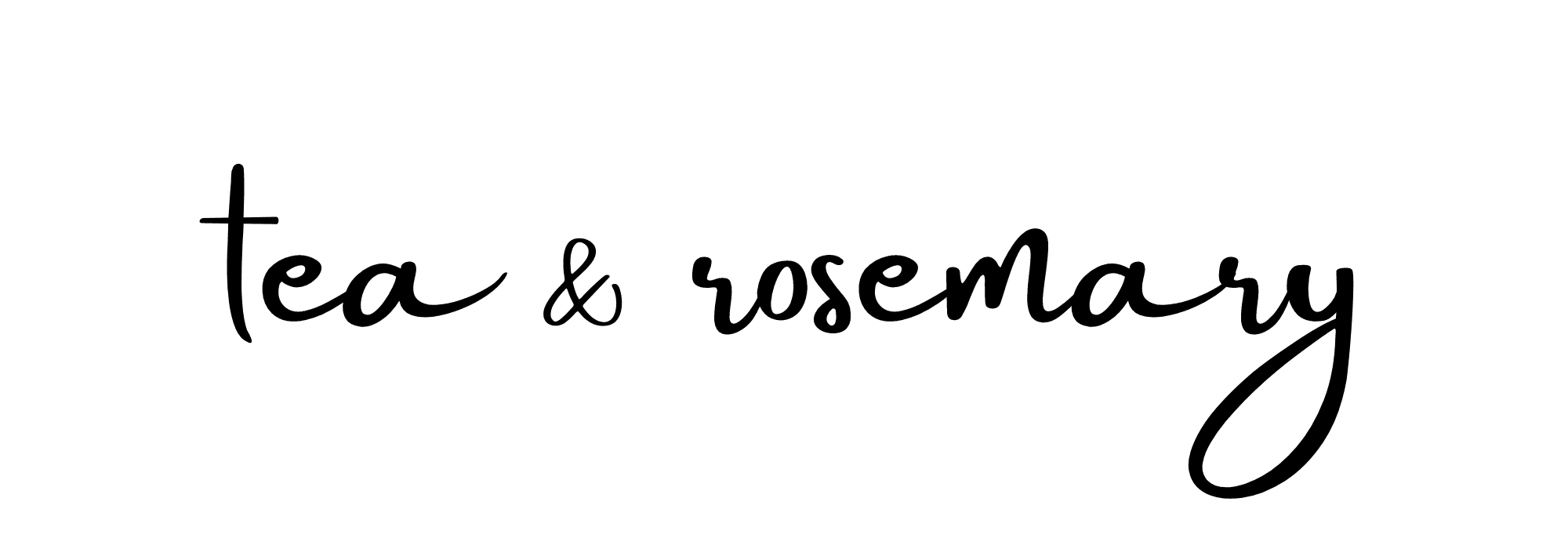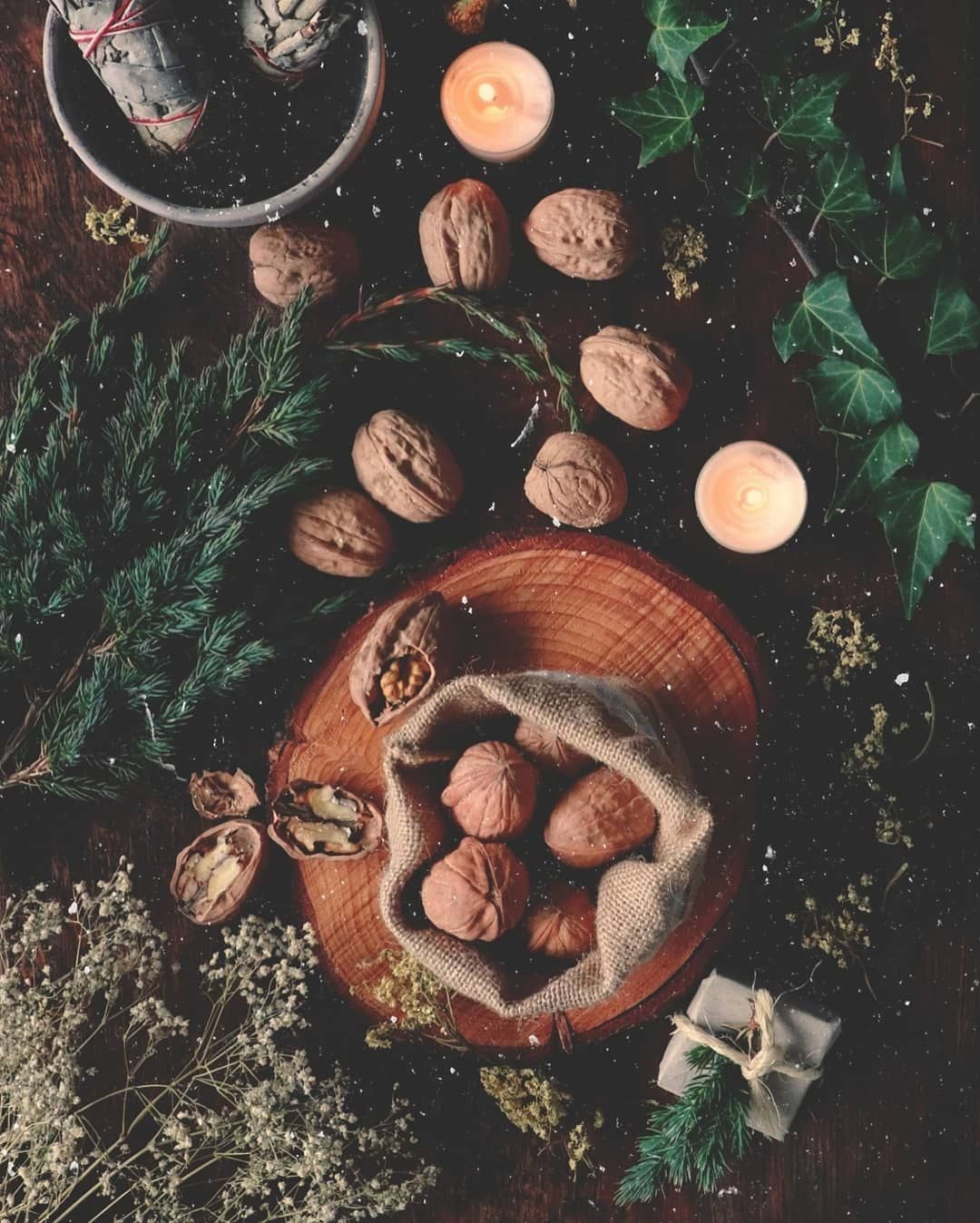Yule is one of the oldest pagan winter solstice holidays. It has been celebrated for thousands of years by various cultures, with a wide variety of rituals and traditions.
This blog post will provide an overview of Yule in general, including its history as well as some popular rituals and traditions you can use to celebrate the holiday!
What Is The Winter Solstice?
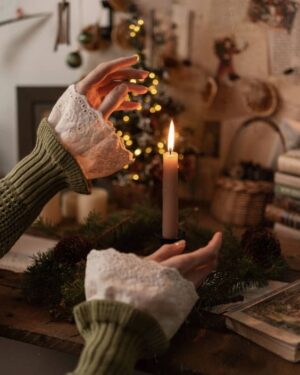
The winter solstice is the time of year when the sun reaches its lowest point in the sky, also known as Yule. This usually happens on December 21st, but varies depending on how close to Earth a given solar year’s perihelion (the nearest point in orbit) falls.
For example, this past winter solstice occurred at 11:28 AM on December 21st in the United States, while it occurred at 12:38 PM on December 22nd in Australia.
The winter solstice is one of the oldest pagan holidays celebrated by people all around the world. The date varies with location, but it always falls before or after December 21st each year.
The Sabbats are pagan holidays that honor the turning of the seasons based on the sun. Yule, or the winter solstice, is recognized as one of these Sabbats.
There are eight holidays, or Sabbats, that are traditionally recognized. These holidays represent birth, death, and rebirth. Traditionally, the Lord/God or The Lady/Goddess as well as other deities were honored during these holidays.
When you celebrate these holidays/Sabbats, there is not one set way to do it. You can do whatever feels natural and fits into your practice best.
Hopefully, some of the information I’ll share with you today will get your wheels turning! If you’re just looking for easy ways to celebrate Yule and the Winter Solstice, scroll down a few sections.
The Pagan Meaning Of Yule
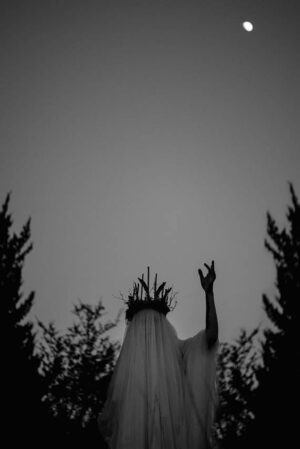
Yule is a time to celebrate the hope of returning light and life. Like at every solstice, we acknowledge that darkness will always be defeated by this brighter side, with each day continuing to get longer as we head towards our beloved summertime!
However, this long night is also an opportunity for a cleansing of the soul, just like the New Moon. To many pagans, Yule is like the traditional New Year holiday. It’s a chance to look ahead to the year to come and begin again.
Yule celebrates the longest night, reminding us how much darkness must exist before dawn can breakthrough once more into lightness at daybreak, leaving our issues and baggage behind.
The celebration of the Yule holiday is a time to clean your home and purge everything that no longer serves you. Doing so will help prepare for this joyous season as well, by creating a space free from any negative energy or memories which may have accumulated over the year past.
The most important part about celebrating Christmas in our modern lives is cleaning up before it begins! By taking some hours during December’s lead-up period to deep cleanse both mind and house, we can set ourselves up with an open heart without all those old mental clutter holding us back.
The upcoming winter solstice is a great time to reflect on the past year and start thinking about what you would like for next year. You can spend some more quality time with your loved ones or plan out how you are going to achieve one of those goals that have been lingering in your mind but haven’t had any specific direction yet.
In fact, for me, Yule is always a time for introspection – to sit back and reflect and consider what I want the next year to look like.
Lastly, Yule is a wonderful time to celebrate peace. Similar to the energy that we experience during Christmas, the Winter Solstice reminds us that peace comes from darkness and stillness. The darkest night of the year can also be the most peaceful and spiritual. It’s a great time to scry, connect, meditate, or do shadow work.
Ancient Rituals For The Winter Solstice Yule Holiday
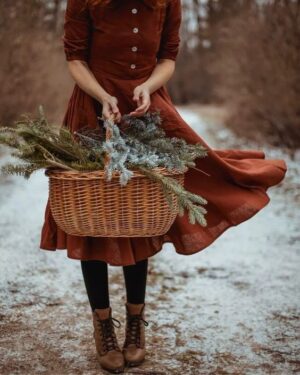
The Winter Solstice was celebrated as early as the Stone Age, when Newgrange in Ireland and Maeshowe in Scotland were constructed. People would gather around these structures (which were built to align with the sunrise, an amazing feat of architecture) and try to capture the last rays of sun during the darkest day of the year.
Pagan holidays are often associated with druids, so it makes sense that some of the earliest Winter Solstice rituals come from the Celtic priests of ancient Britain. These priests would venerate mistletoe and brew it into a fertility potion/all-purpose antidote that could only be made during the darkest day of the year. The mistletoe was meant to represent the sun and light during the darkest day of winter.
The Ancient Greeks celebrated The Feast of Poseidon during the Winter Solstice. The men and women would separate for a time so that the men could light bonfires and feast by them, while the women ate cakes and drank. Later, each town would host a public banquet and sacrifice animals in the name of the feast, which lasted for many days and was one of the biggest festivals of the year.
In Ancient Rome, Saturnalia was celebrated during late December and was one of the largest (and most hedonistic) holidays of the year. Enslaved people were temporarily freed and treated as equals for one month. Schools and businesses were closed so that everyone could celebrate the holiday.
Yule traditions came later; Yule is technically a twelve-day feast, beginning on the Winter Solstice, which centers around the worship of each tradition’s major deities. Yule was most commonly celebrated in Germanic countries throughout history, such as in Norway and Sweden.
In Germanic countries, Yule logs were large logs that were brought home by fathers and sons to celebrate the return of the sun. These logs were set on fire at one end; it could take 12 days for the log to burn out, and the people feasted until the fire from the log went out. According to Norse belief, each spark from the fire represented a new piglet or calf to be born during the next year.
Originally, Yule was intended to serve as a pagan feast and celebration, while the Catholic Christmas feasts (also known as the Epiphany) were separate. However, today many people celebrate both Yule and Christmas in conjunction.
St. Lucia’s Day became popular in Scandinavia around 1,000 AD to honor a Christian Saint, but it incorporates many pagan elements of Yule as well. St. Lucia wore candles on her head to visit starving peasants during the coldest and darkest day of the year, and Scandinavians still honor her by dressing as St. Lucia and lighting candles around the home.
Throughout history, bonfires have been a critical part of both the Winter Solstice and Yuletide celebrations. Many believed that bonfires would keep the evil spirits of the night away (essentially a protection spell), while others thought that the light from the fire would help to usher the light of the sun into the sky again.
Yule eventually became a time when people would decorate with evergreens, feast, exchange gifts with family and friends, and light candles around the home. Even Christmas trees were originally a part of the pagan Yule holiday!
Easy Ways To Celebrate Yule At Home
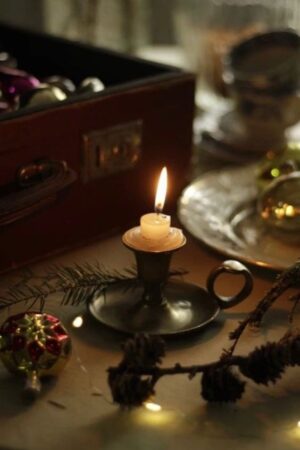
If you want to celebrate Yule/the Winter Solstice at home, there are endless ways to do this. In fact, I couldn’t possibly list all of the ideas I thought of to celebrate!
Here are some of my favorite ways to celebrate Yule that are authentic and easy.
Decorating:
Yule is the perfect time to decorate! Adorn your home with evergreen boughs, holly, pine cones, and other winter trinkets.
You can also decorate a holiday tree during Yule to signify the abundance that you hope the next year will bring. I like to bless my ornaments with good energy.
Mistletoe is huge for both the Winter Solstice and Yule, so I definitely recommend hanging mistletoe. It’s known as a kissing plant, but it’s great for protection as well!
Eating/Drinking:
A feast is a huge part of Yule, but there are many foods and drinks that incorporate elements of the quieter Winter Solstice, too.
I recommend baking with apples or cloves. You can also make a delicious tea with rosehip, peppermint, vanilla, cinnamon, or cloves for warmth. Try casting a quick spell over your tea before drinking it.
There are so many different traditional Yule recipes from various cultures. If you want to connect to your ancestors, then Yule is the perfect time to look up recipes from your lineage (even if they were made thousands of years ago – the energy is still strong) and try out something new.
Light Fire:
Winter Solstice rituals almost always center around fire, so this is one element I make sure to incorporate into my festivities.
If you have a fireplace (gas, electric, real, etc.) then simply light a fire during the morning and let it burn all day. This is one of my favorite Winter Solstice traditions because it’s simply so cozy!
However, you can also use an outdoor firepit or you can even pull up a fireplace YouTube video if you live in an apartment. You’d be surprised how realistic they feel; I swear these videos give off real fire energy.
Candles can also be a good source of fire for Winter Solstice rituals. I put candles (in safe places) all over my home and keep our day bright, even though the sky is dark.
A Yule Log is a fun Scandanavian tradition that you can try as well. Light a log on one end and let it burn; feast until the log burns itself out.
Offerings:
I like to leave out offerings during the Winter Solstice. Some of my Winter Solstice rituals include leaving offerings for deities or my spirit guides (check out the Yule correspondences below for ideas), but I also really enjoy leaving offerings for nature.
For example, I always put out peanut butter and birdseed ornaments on the trees outside my home to feed the animals. I’ll also leave food in the woods for animals who won’t venture to my home, and I’ll give energy to any trees who are suffering during the winter months.
Leave an offering that feels right to you. I really enjoy giving back on this darkest day; it just seems important to me.
Divination:
Because the Winter Solstice represents the end of a year if you follow the sun, then I recommend that you do a bit of divination to see what your next year will bring. Use your pendulum, scry, or do a Winter Solstice tarot spread. This is a great way to cleanse yourself and look ahead to the future.
Shadow Work:
Shadow work can also be done during the Winter Solstice. If you believe in the “dark night of the soul,” then there truly is no better day! Download some shadow work prompts and dig deep into who you became during the last year, then cleanse yourself thoroughly.
Yule Spells:
There are many different types of spells that you can do, either on the Winter Solstice or during the Yule season in general. Most of these spells are about positivity and looking ahead.
Because Yule is a time to reflect, you can definitely do spells about your past, but it’s also a time to set your intentions for the coming year, meaning that this is a great time to do any spell that will start something new.
I love doing money spells during the Winter Solstice. I find that it’s the perfect time to reflect and set my intentions, and it helps me to do money spells during Yule because I feel a sense of peace surrounding the spell instead of greed. In my experience, this makes the money spell much more effective.
There are literally endless types of money spells that you can cast. Check out my favorite money jar spell here.
Protection
Yule is also a great time to cast a protection spell. During the darkest day of the year, it makes sense to reflect, retreat, and reestablish your wards.
I recommend casting a defensive protection spell during the Winter Solstice rather than an offensive spell. Yule isn’t a great time for aggressive action, but it works well for self-care, which protection spells fall under.
Reflection
Any sort of reflection spell feels good around the Winter Solstice. After all, this dark night is an opportunity to reflect. You can do a meditation, scry, or actually cast a spell that will show you the past year and how you can improve going forward.
Good Luck
Similar to prosperity spells, good luck spells tend to work very well if they’re cast on the Winter Solstice. I especially like good luck spells for the winter ahead.
Wish
A wish spell can also work well if cast on the Winter Solstice. You can wish for just about anything and use you energy (and your spell’s ingredients) to set your wish in motion.
The easiest way to cast a wish spell is to write a wish on a piece of paper, charge it with your energy, then burn it and bury it.
Dissolution
While Yule is a great time for setting new things in motion, it’s also a time to let go of the past.
If you feel like you’re holding onto something or someone that no longer serves you, consider a cord cutting spell or other type of dissolution spell.
Health
Because Yule is all about retreat and reflection, I find that health spells cast on the Winter Solstice tend to work well. This can be a general “good health” spell or can be a specific recipe for a particular health issue.
Celebration
Like every other Pagan holiday, Yule is first and foremost a celebration. Go ahead and cast those celebratory spells!
During the Winter Solstice, you can celebrate light (as the days will get lighter from here on out), friendship, health, winter, darkness, and just about anything else you’d like.
Yule & The Fae:
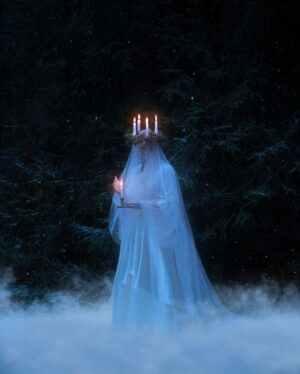
It is said that the Wild Hunt begins on the Winter Solstice and progresses throughout the Yule feasts. Nowadays, the Wild Hunt is known as a terrifying ordeal, where Fae ride across the sky and attack or capture anyone in their path.
Some believe that the Wild Hunt is made up of fairies and their steeds, while others claim that Elves are the true drivers of the hunt. Odin is often said to be the leader of the hunt, while others think that the hunt is led by the Unseelie Fae or even the devil.
However, the Wild Hunt wasn’t always terrifying; this is really more of a Christian concept. Pre-Christianity, many believed that the hunt signified good or bad things to come, depending on the sounds you heard from the sky.
I do believe that there is some truth to the hunt. Because the veil is so thin between our world and the Otherworld (the world where Fae reside), we might be able to hear pieces of the hunt. However, I don’t necessarily believe that it’s evil. Instead, I’m pretty sure the hunt is a fairy celebration. The Fae can be a bit more provocative and aggressive than humans, so it’s hard for us to understand what a celebration looks like.
Yule Correspondences:
Here are the main correspondences for Yule/the Winter Solstice. You may wish to use this information in your spell work, or maybe you just want to decorate your home and celebrate in the theme of Yule.
Colors:
- Red
- Green
- White
- Silver
- Icy Blue
- Midnight Blue
- Gold
Plants & Herbs:
- Apple
- Ash
- Bay
- Bayberry
- Birch
- Cedar
- Chamomile
- Chestnut
- Cinnamon
- Clove
- Comfrey
- Currant
- Cranberry
- Elder
- Evergreen
- Fir
- Frankincense
- Ginger
- Hibiscus
- Holly
- Ivy
- Juniper
- Mistletoe
- Moss
- Myrrh
- Nutmeg
- Oak
- Orange
- Pear
- Peppermint
- Pine
- Poinsettia
- Pomegranate
- Rosemary
- Saffron
- Sage
- Sandalwood
- Spearmint
- Thistle
- Wintergreen
- Yellow cypress
- Yew
Incense & Oils:
- Cedar
- Cinnamon
- Clove
- Frankincense
- Ginger
- Myrrh
- Nutmeg
- Peppermint
- Pine
- Spruce
- Sweet Orange
Crystals & Stones:
- Bloodstone
- Clear Quartz
- Diamond
- Emerald
- Garnet
- Peridot
- Ruby
Animals:
- Bear
- Boar
- Buffalo
- Doves
- Eagle
- Goat
- Owl
- Reindeer
- Robin
- Snow Goose
- Sow
- Squirrels
- Wren
Decorations:
- Bells
- Candles
- Evergreen
- Gifts
- Goddess Figures
- Holly
- Lights
- Mistletoe
- Pine Cones
- Poinsettias
- Sun Symbols
- Wreaths
- Yule Log
- Yule Tree
Meanings:
- Honor,
- Rebirth
- Transformation
- Light out of darkness
- Creative inspiration
- The mysteries
- New life
- Regeneration
- Inner renewal
- Reflection/introspection
Customs:
- Handing lights
- Gift-exchanging
- Singing
- Feasting
- Resolutions
- New fires kindled
- Strengthening family & friend bonds
- Generosity
- Yule log
- Hanging mistletoe
- Apple wassailing
- Burning candles
- Yule tree decorating
Element:
- Earth
- Fire
Trees:
- Apple
- Birch
- Cedar
- Chestnut
- Citrus
- Fir
- Holly
- Juniper
- Oak
- Pine
- Yew
Food:
- Nuts
- Apple
- Pear
- Caraway cakes soaked with cider
- Orange
- Hibiscus or ginger tea
- Roasted turkey
- Nuts
- Fruitcake
- Fried fruit
- Cookies
- Eggnog
- Mulled wine
Deities:
- Alcyone (Greek)
- Ameratasu (Japan)
- Baldur (Norse)
- Bona Dea (Roman)
- Cailleach Bheur (Celtic)
- Demeter (Greek)
- Dionysus (Greek)
- Frau Holle (Norse)
- Frigga (Norse)
- Hodr (Norse)
- Holly King (British/Celtic)
- Horus (Egyptian)
- La Befana (Italian)
- Lord of Misrule (British)
- Mithras (Roman)
- Odin (Norse)
- Saturn (Roman)
- Spider Woman (Hopi)
I hope this gives you a great overview of Yule and the Winter Solstice! This is a lovely time to celebrate peace and regeneration and often has the same undertones as Christmas. Happy Yule!
